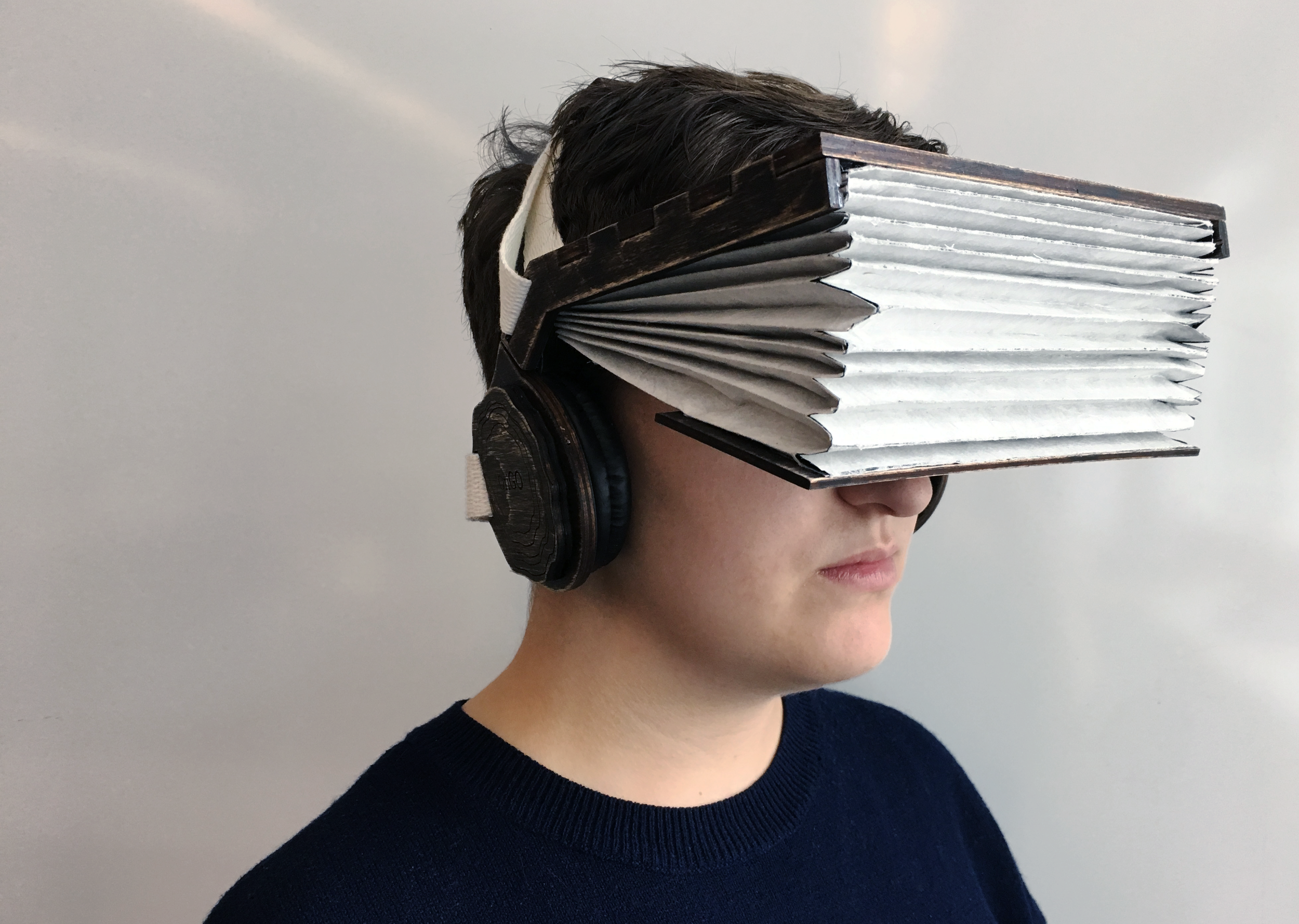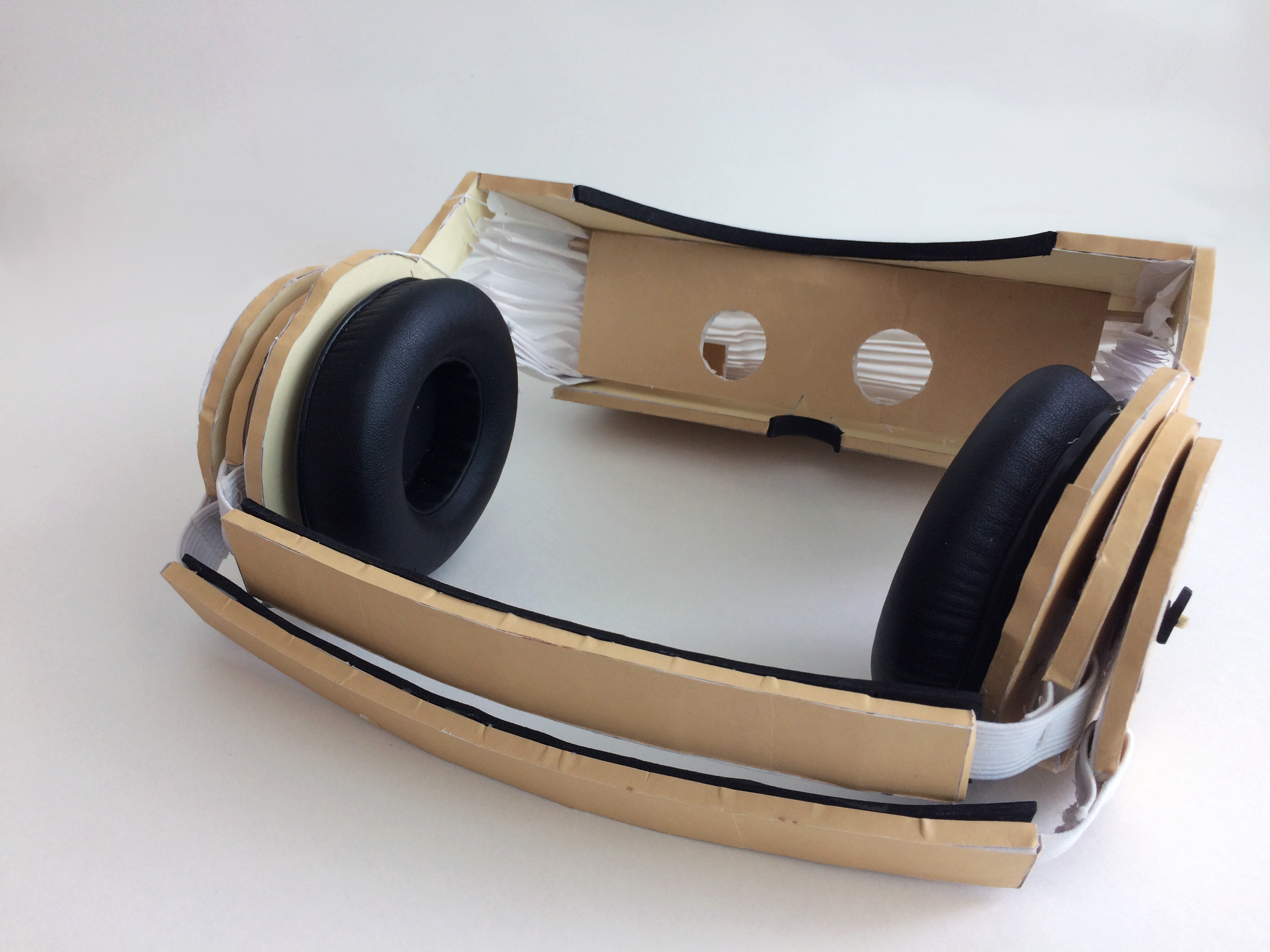SUMMARY
OriGO is a fully functional mobile VR headset created with the restriction of using predominantly wood and paper material, which we combined to create a humanistic, collapsible design based on traditional paper lanterns.
ROLE
Poster design, low-fidelity prototyping, diagramming, physical modelling.
TEAM
Kit Weir
Hannah Zaitlin
CONCEPT
project brief
As part of a material design course, my team was assigned to create a mobile VR headset that combined the principles of ergonomics with a pair of materials assigned at random. The brief was to design a use case and persona for our headset, and then construct a high-fidelity physical prototype that was ready for public demo at a final showcase.
material research
We began by conducting research on our assigned materials of wood and paper. During this process, we created two posters to showcase our research and how we planned to incorporate the materials into our design. Both of our materials were widely adaptable with strong humanistic qualities. Different forms of paper or wood could hold widely different qualities, from weight to texture. They also held long and rich histories of design throughout the world, which we knew we wanted to incorporate as a contrast to the modern, high-tech application of our product.
PROTOTYPE
rapid prototyping
Our initial prototypes explored ways of presenting VR technology in a way that highlighted the abilities of our materials. One of the prototype sketches we created was based on a baseball cap combined with a foldable paper lantern.
This concept presented the user with a familiar form while also making use of paper’s flexibility. This prototype would allow the entire headset to collapse in both the front and back, resulting in a much more compact and sturdy form that could be easily transported.
As we refined, we focused on a form that would emphasize durability, stability, and usability. In my next prototype, I replaced the folded paper over the top of the head with dual straps that could be adjusted to consider a wider variety of users. The straps allowed the headset to be more secure during movement, as well as providing greater durability when considering the weight of the visor during use. We also began to consider the logistics of incorporating a screen and audio into the design.
low-fidelity prototyping
With our sketches complete, we began to physically prototype using cardboard and wax paper. In our rough physical model, we refined the paper visor into a wider shape that could fully block out light and distractions from the user’s peripheral vision, and adjusted the location of the straps in order to support the weight of the visor. We also adjusted the hinges on the headphones to be adjustable in both directions, so that in addition to folding inward for compact transport, they also folded outward to accomodate a wider range of users.
Low-fidelity prototype with the visor collapsed.
Low-fidelity prototype with the visor unfolded.
With the overall design of the product complete, we implemented the lenses that allowed for the VR to function and ran an audio line to the headphones. We iterated on the distance of the lenses and phone placement to find the optimal placement for both visibility and stability.
REFINEMENT
As we began the high-fidelity prototype, I created an exploded and multivew projection of the headset. This allowed us to refine our measurements in preparation for laser cutting, and to take inventory of our parts in order to prepare the raw wood, paper, and electronic materials.
Multivew projection with measurements.
Exploded isometric view.
Once our final measurements were complete, I laser cut each of the components and then stained and sanded them by hand in order to emphasize the natural grain of the wood. The result was an humanistic, approachable appearance that contrasted against the generally sleek and modern materials used in VR headsets.
Laser-cut and stained components prior to assembly.
The finalized headset was created by gluing together the wooden components, using finger joints for additional stability on the visor. Hinges were screwed into the wood to allow the headphones to collapse inward or bend outward. The paper shutter was folded and sewn with thread to keep a shuttered shape even when fully extended. Finally, the wiring, lenses, and fabric straps were glued in place along pre-cut channels in the wood.
REFLECTION
The final result of OriGO is a fully functional, robust, and uniquely designed VR headset.
This project was my first major foray into physical product design. The process allowed me to directly experience the importance of ergonomics in physical design, as well as the importance of considering for the restraints and strengths of physical materials.
If we were to refine this design further, we would improve the ease and functionality of inserting and removing the phone, as well as attempting to use a lighter wood in order to reduce weight to reduce fatigue over longer periods of wear.
OriGO was demonstrated at a public showcase at which it was well received. The project received an A+ grade and was used as a teaching example in subsequent semesters.







